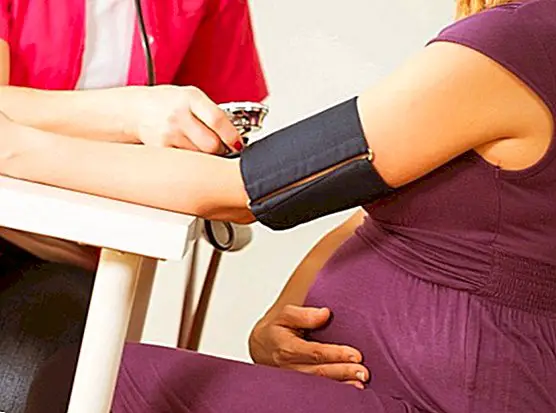How is the menstrual cycle of women
The ovaries they are part of the reproductive system of women, which consist of a pair of glands that produce the ovules and two very important hormones in the reproductive and sexual development of women - as well as fundamental for pregnancy and the correct function of the reproductive organs -, as are estrogen and progesterone. They have an oval shape and the size of an almond, we found located just above the fallopian tubes, on both sides of the uterus, in the lower abdomen of the woman. Its weight does not reach only 7 grams, and its size in fertile women is 1x2x3 centimeters.
As indicated above, in addition to the production of the hormones estrogen and progesterone, The main function of the ovaries is the production of ovules. In fact, every month during ovulation, the left or right ovary produces a single mature ovum, which is released during menstruation, and will be ready for fertilization by the man's sperm.

What is the menstrual cycle
The menstrual cycle is the period between one menstruation and the next, separated from each other by ovulation. While, the menstruation (or period) consists of the monthly bleeding of the woman, also known as the rule. That is why it is popularly said that when a woman has her period or her period, she is menstruating. In this sense, menstrual blood is partly tissue inside the uterus and partly blood, which flows from the uterus through the opening of the cervix to exit the woman's body through the vagina.
Menstruation is part of the menstrual cycle.
How is the menstrual cycle, and what does it consist of?
The menstrual cycle begins on the first day of menstruation (that is, the first day of menstrual bleeding begins). An average menstrual cycle lasts around 28 days, but nevertheless a cycle can last between 23 to 35 days. It is divided into two phases:
- First phase: It is known as the estrogenic phase. It is characterized by a predominance of estrogen production, during which period the ovum grows and matures slowly inside the ovary, where it is prepared to be expelled later on around day 14 of the cycle (phenomenon known as ovulation).
- Second stage: when ovulation is fulfilled estrogen production decreases, at which time the ovary begins to increase the production of another hormone, progesterone. At this time the endometrium increases its thickness, the size and the number of different blood vessels that nourish it. Approximately on day 25 of the cycle, progesterone production decreases. In this way, on the 28th day of the cycle, the menstrual flow falls, beginning a new cycle in which both maturation and expulsion processes will be repeated.
If precisely during the days close to the middle of your menstrual cycle the woman has sexual relations and the ovum is fertilized, it will be implanted in the inner layer of the uterus, with the beginning of pregnancy taking place.
If you want to learn and know more about menstruation and its various problems and disorders, we encourage you to discover the following articles: Menstrual pain, Ovarian pain and painful ovulation.


